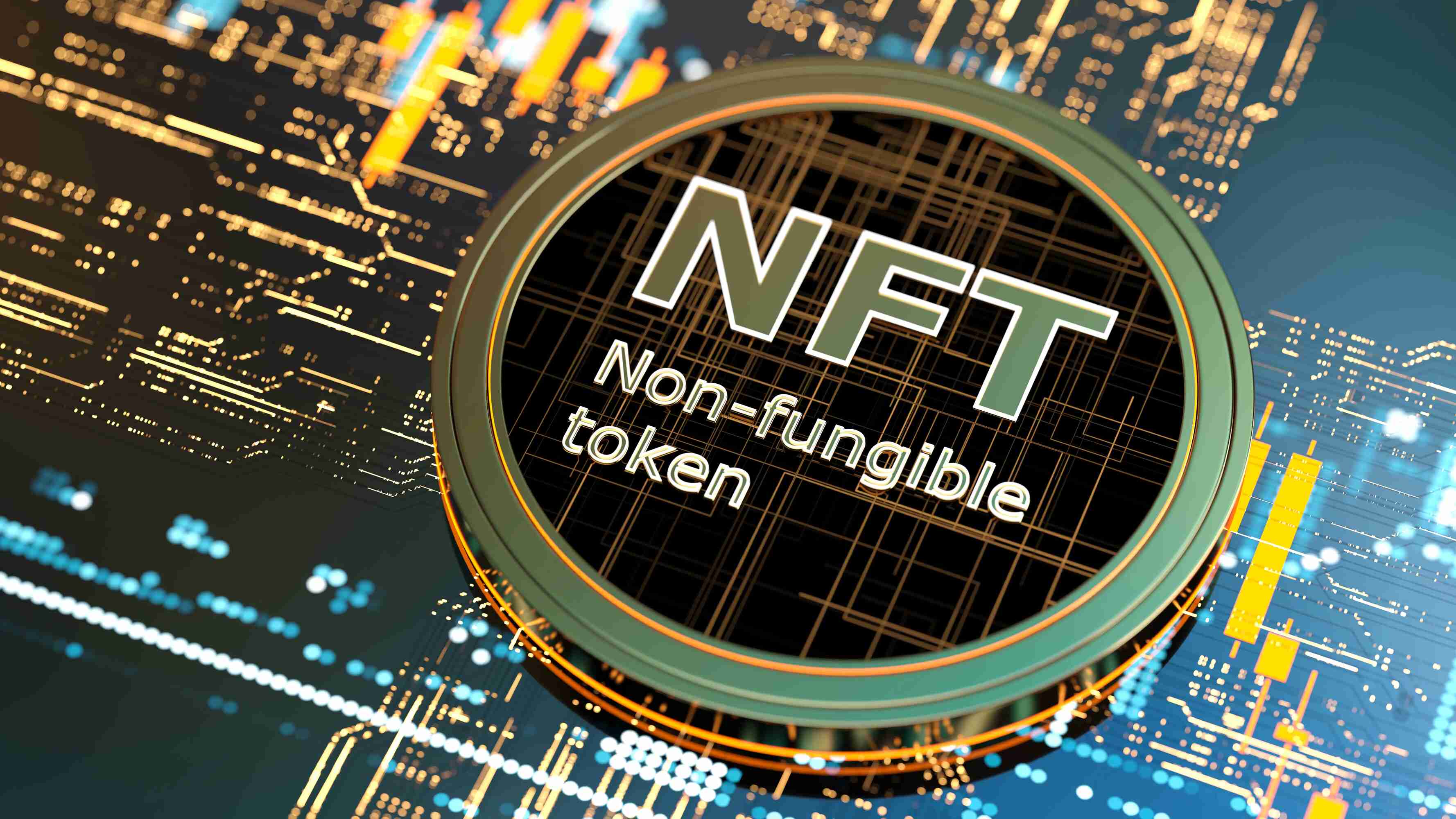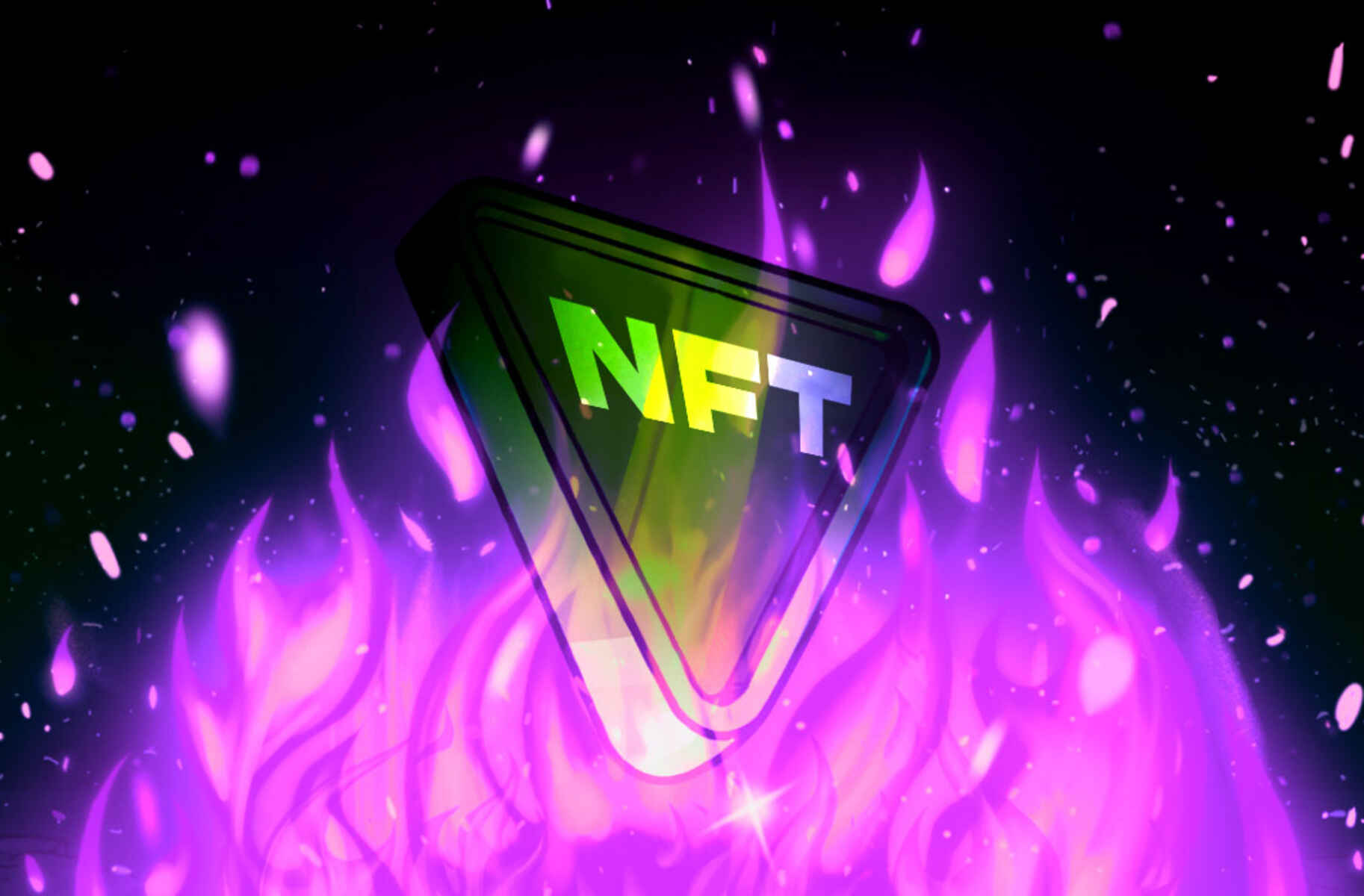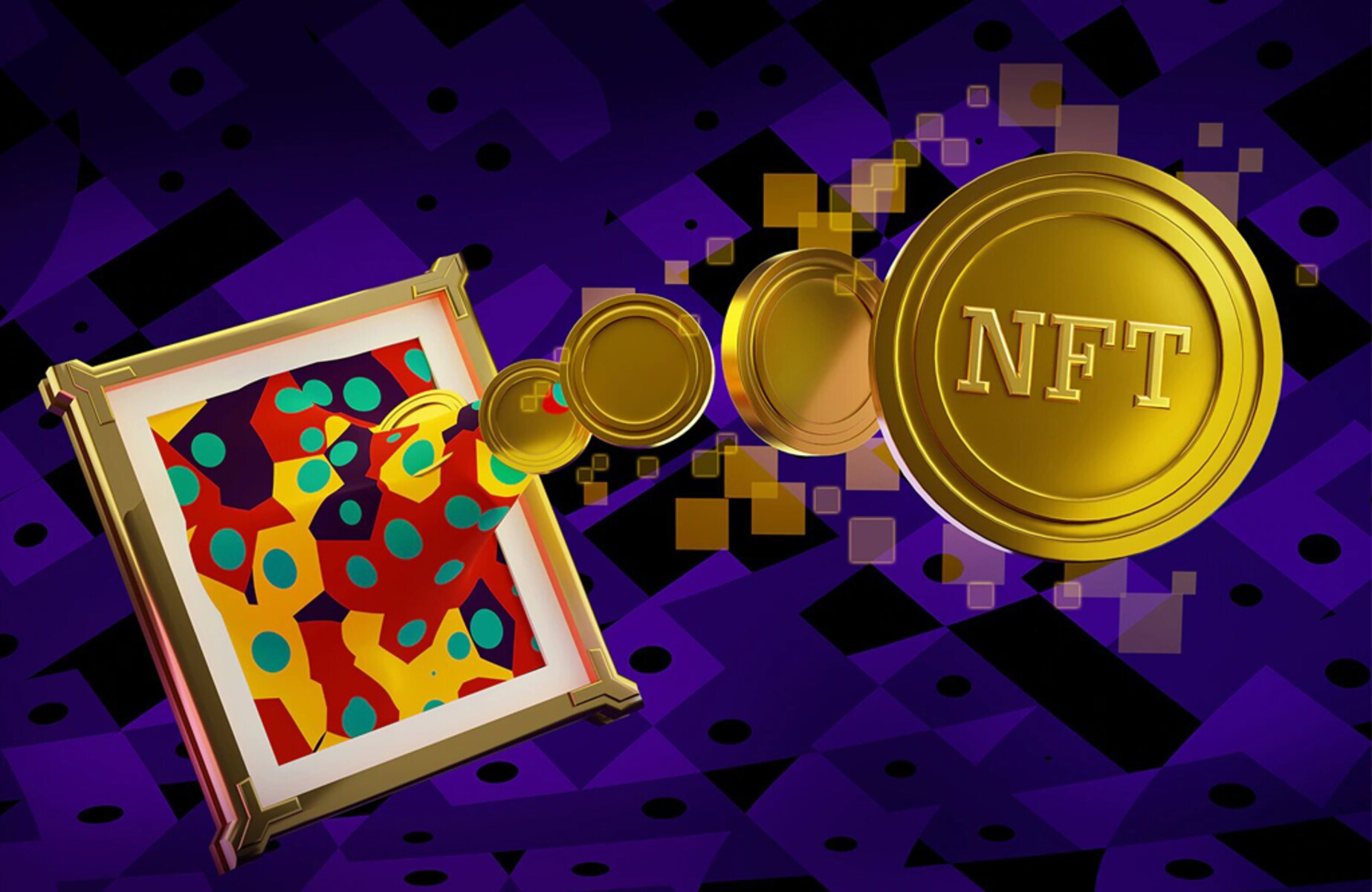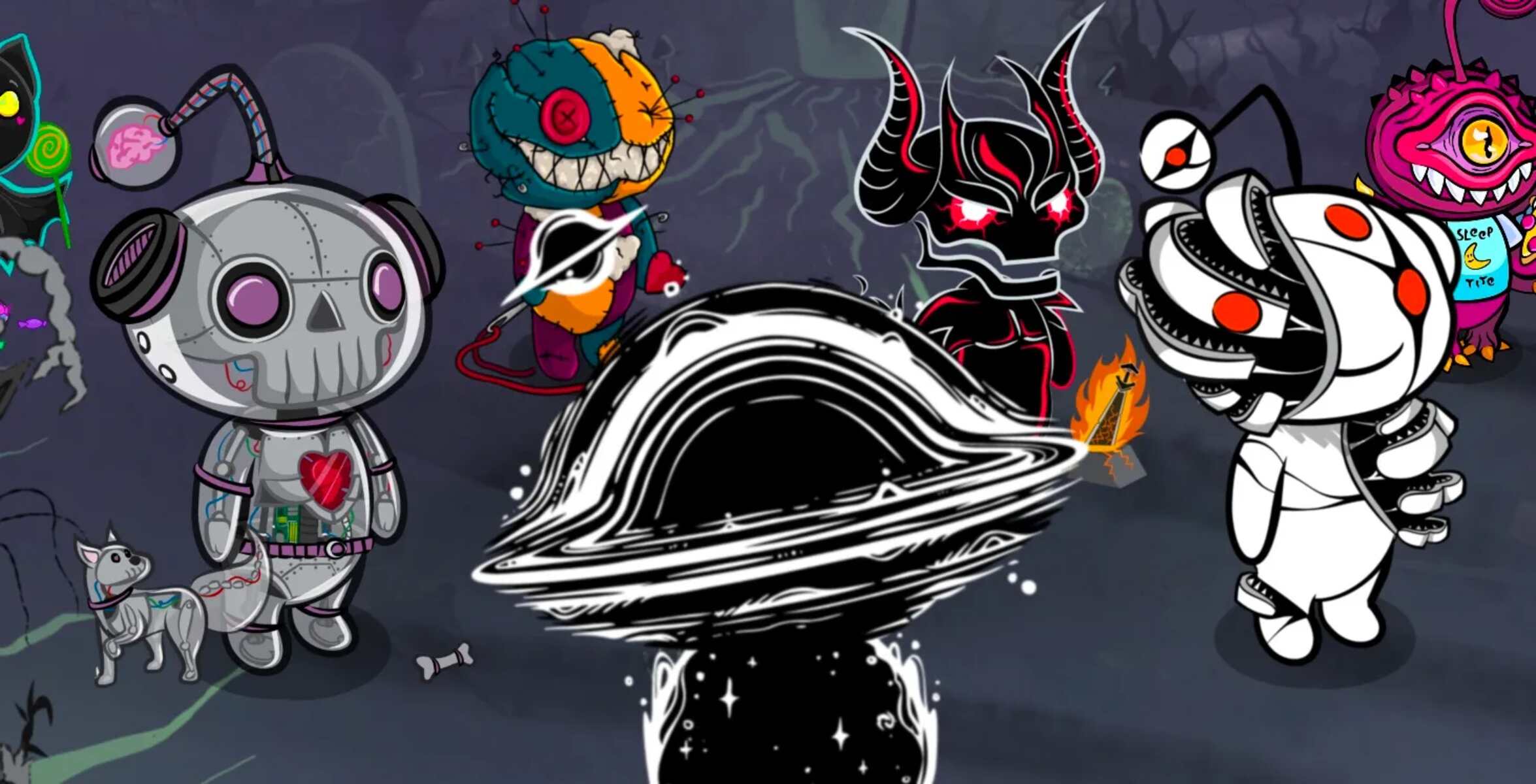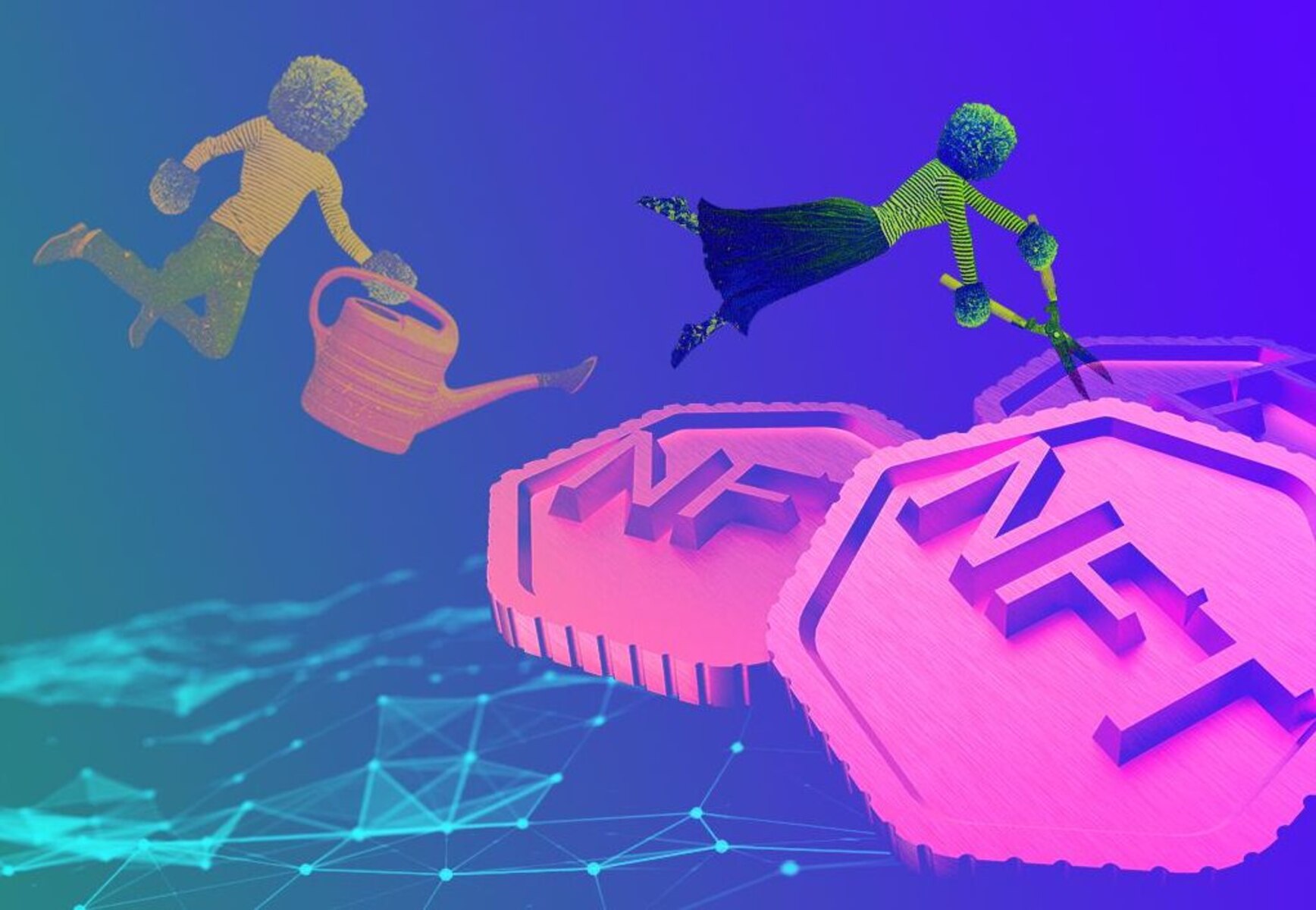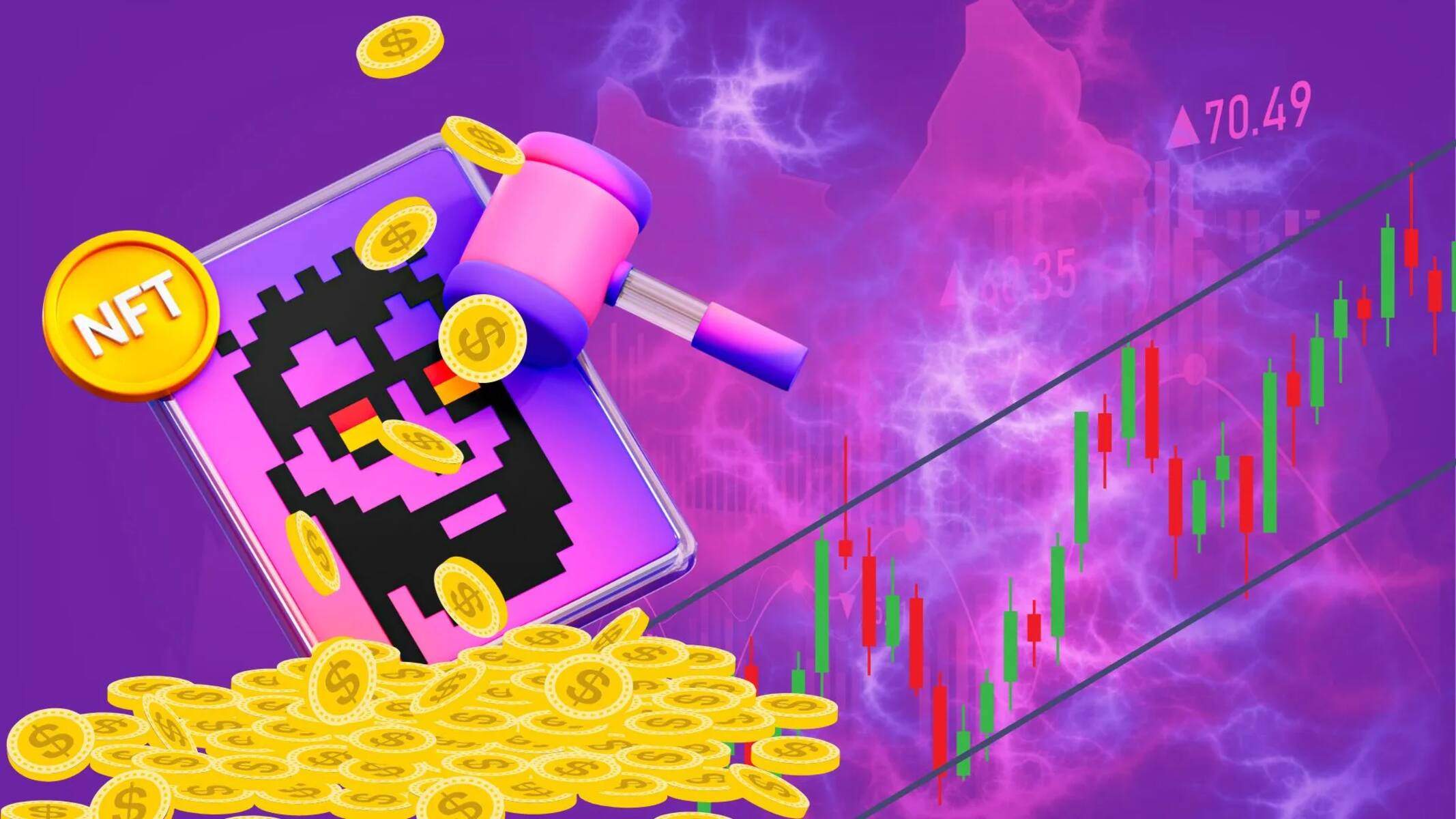What Is An NFT?
An NFT, short for Non-Fungible Token, is a digital asset that represents ownership or proof of authenticity of a unique item or piece of content. Unlike cryptocurrencies such as Bitcoin or Ethereum, which are fungible and can be exchanged on a like-for-like basis, NFTs are indivisible and cannot be exchanged on a one-to-one basis. Each NFT has a distinct value and is not interchangeable with other tokens.
NFTs are built on blockchain technology, specifically on smart contract platforms like Ethereum. This means that the ownership of an NFT is recorded and verified on a public ledger, ensuring transparency and immutability. In essence, an NFT acts as a digital certificate of ownership for digital or physical assets, including art, music, videos, virtual real estate, collectibles, and more.
One of the key features of NFTs is their ability to authenticate and verify the ownership and provenance of digital assets. This solves a longstanding challenge in the digital world, where it is relatively easy to duplicate or share digital content without the original creator’s consent. With NFTs, creators can now establish scarcity and uniqueness for their digital creations, which adds value and empowers them to monetize their work directly.
Moreover, NFTs have gained significant attention in the art world. Artists can tokenize their artwork as NFTs, allowing them to sell digital copies or limited editions of their pieces directly to collectors. The ownership and transaction history of each artwork are stored on the blockchain, guaranteeing its authenticity and provenance. This provides artists with a new revenue stream and allows collectors to securely invest in and trade digital art.
Another sector that has seen a surge in NFT usage is gaming and collectibles. NFTs have revolutionized the concept of in-game assets and virtual items by enabling players to truly own their virtual possessions. These assets can be bought, sold, or traded outside of the game environment, giving players more control and value for their investments. Additionally, collectibles like digital trading cards and virtual pets have become highly sought-after NFTs, attracting collectors and enthusiasts alike.
While the concept of NFTs holds great promise, it is not without its challenges. One of the main concerns is the environmental impact of blockchain technology. The energy consumption associated with mining and verifying blockchain transactions, including NFTs, has raised questions about its sustainability.
Regardless, NFTs have opened up new possibilities for artists, creators, and collectors in the digital realm. They have created a decentralized marketplace where unique digital assets can be bought, sold, and cherished. With their ability to authenticate, tokenize, and monetize digital content, NFTs have the potential to reshape the way we perceive and interact with digital assets.
Introduction
The world of digital assets and blockchain technology has witnessed a revolutionary development in the form of Non-Fungible Tokens (NFTs). NFTs have garnered immense attention and have become the talk of the town in recent times. But what exactly are NFTs and why are they creating such a buzz?
An NFT, short for Non-Fungible Token, is a unique digital asset that represents ownership or proof of authenticity of a specific item or piece of content. Unlike cryptocurrencies such as Bitcoin or Ethereum, which are interchangeable and can be exchanged on a like-for-like basis, NFTs are indivisible and have distinct values. Each NFT is distinct and cannot be exchanged on a one-to-one basis with other tokens.
NFTs are built on blockchain technology, with Ethereum being the most widely used blockchain for creating and trading NFTs. Blockchain technology ensures that the ownership and transaction history of an NFT are recorded on a decentralized ledger, making it transparent, secure, and immutable.
One of the primary functions of NFTs is to authenticate and verify the ownership and provenance of digital assets, addressing a longstanding challenge in the digital world. With NFTs, creators can establish scarcity and uniqueness for their digital creations, enabling them to monetize their work directly. This has opened up new avenues and revenue streams for artists, musicians, photographers, and other content creators in the digital realm.
Moreover, NFTs have gained significant traction in the art world. Artists can tokenize their artwork as NFTs, allowing them to sell digital copies or limited editions of their pieces directly to collectors. The ownership and transaction history of each artwork are stored on the blockchain, guaranteeing its authenticity and provenance. This has created a decentralized marketplace for digital art, empowering artists and collectors alike.
NFTs are not limited to the art world alone. They have also transformed the concept of in-game assets and virtual items in the gaming industry. Players can now truly own their virtual possessions by acquiring NFT-based assets. These assets can be bought, sold, or traded outside of the game environment, giving players more control and value for their investments. Additionally, digital collectibles like trading cards, virtual pets, and virtual real estate have become highly sought-after NFTs, attracting collectors and enthusiasts.
Although NFTs have gained popularity, they are not without their challenges. One of the concerns surrounding NFTs is the environmental impact of blockchain technology. The energy consumption associated with mining and verifying blockchain transactions, including NFTs, has raised questions about its sustainability. It is important for the industry to address these concerns and find solutions to make NFTs more eco-friendly.
In this article, we will delve deeper into the world of NFTs to understand their mechanics, explore their unique features, and discuss their applications. Whether you are an artist looking to tokenize your work, a collector wanting to invest in digital art, or simply curious about this evolving technology, this article will provide you with an introduction to the fascinating world of NFTs.
Understanding NFTs
To truly grasp the concept of Non-Fungible Tokens (NFTs), it’s important to understand the key characteristics and underlying technology that define them. NFTs represent a paradigm shift in the digital asset space, offering unique opportunities for creators and collectors alike.
Unlike traditional cryptocurrencies that are fungible and can be exchanged on a like-for-like basis, NFTs are indivisible and cannot be exchanged equally. Each NFT has a distinct value and is unique in its own right. This uniqueness is made possible through the use of cryptographic technology and blockchain.
At the core of NFTs is blockchain technology, a decentralized and transparent public ledger that records and verifies transactions. Blockchain ensures the authenticity and provenance of NFTs by providing a permanent record of ownership. The most widely used blockchain for NFTs is Ethereum, which offers a robust infrastructure and smart contract capabilities.
Smart contracts, self-executing agreements written in code, are an integral part of NFTs. They govern the rules and conditions of ownership, transfer, and usage of the digital assets represented by NFTs. These smart contracts enable creators to establish royalties or commissions, ensuring that they receive a percentage of subsequent sales or transfers of their NFTs.
One key aspect that sets NFTs apart is their ability to represent both digital and physical assets. While digital assets such as digital art, music, videos, and virtual real estate are commonly associated with NFTs, they can also be used to represent ownership or proof of authenticity for physical objects. For instance, a luxury brand could mint an NFT to authenticate limited edition sneakers, ensuring that they are genuine and traceable.
NFTs offer a new level of ownership and provenance verification in the digital world. Before NFTs, it was challenging to establish the originality and scarcity of digital assets, leading to issues like unauthorized duplication and plagiarism. NFTs provide a solution by allowing creators to tokenize their work, proving its authenticity and uniqueness.
Moreover, NFTs enable creators to monetize their digital assets in ways that were previously not possible. Through auctions or direct sales, creators can sell their NFTs to collectors and fans, bypassing intermediaries and gaining more control over their work and earnings. This has opened up new revenue streams and opportunities for artists, musicians, and other digital content creators.
Collectors and enthusiasts are also drawn to NFTs due to their ability to own and trade unique digital assets. NFTs provide a sense of exclusivity and rarity in the digital realm, allowing collectors to showcase their unique collections and participate in a vibrant marketplace. It also enables fractional ownership, where multiple individuals can own a fraction of an NFT, bringing the concept of co-ownership to a whole new level.
As NFTs continue to gain popularity, it is crucial to explore their different types, such as art NFTs, gaming NFTs, and other applications. Each type has its own unique characteristics, use cases, and potential for growth. By understanding these nuances, individuals can make informed decisions about creating, collecting, or investing in NFTs.
How do NFTs Work?
Understanding how Non-Fungible Tokens (NFTs) work involves delving into the underlying technology that powers them: blockchain and smart contracts. These technologies provide the foundation for NFTs to be created, bought, sold, and owned in a secure and transparent manner.
NFTs are built on blockchain technology, with Ethereum being the most commonly used blockchain for creating and trading NFTs. At its core, blockchain is a decentralized and distributed ledger that records transactions and ensures their immutability. It provides trust and transparency by eliminating the need for intermediaries or centralized authorities.
Smart contracts, which are self-executing agreements coded on the blockchain, play a vital role in the functionality of NFTs. Smart contracts enable the creation and enforcement of the rules and conditions associated with NFT ownership, transfer, and royalties. They define the behavior of the NFT and allow creators to have control over their assets even after they are sold.
When an NFT is created, it is minted on the blockchain by embedding a unique identifier and metadata into a smart contract. The metadata includes information about the asset, such as its title, description, image, or video. This metadata can also include additional attributes, such as the artist’s name, edition number, or any other relevant details.
Once minted, the NFT can be bought and sold on various digital marketplaces or platforms. When a buyer purchases an NFT, the ownership of the asset is transferred to their digital wallet. This is recorded and verified on the blockchain, ensuring the transparency and permanence of the ownership record.
One of the unique aspects of NFTs is that they can contain programmable functionality. This means that the smart contract governing the NFT can include additional features or behaviors, such as the ability to unlock exclusive content, interact with other NFTs or virtual environments, or even participate in gamified experiences.
Moreover, NFTs offer creators the opportunity to earn ongoing royalties or commissions whenever their NFT is sold or traded in the secondary market. This is made possible through the programmable nature of smart contracts. Creators can set a specific percentage or royalty rate in the smart contract, ensuring that they earn a portion of each subsequent sale or transfer of the NFT.
The ownership and transaction history of NFTs are publicly available on the blockchain, providing a transparent and immutable record. This transparency allows for easy verification of an NFT’s authenticity and provenance.
It’s important to note that the value of an NFT is ultimately determined by the market. Factors such as the perceived uniqueness, scarcity, demand, and the reputation of the creator can all influence the value of an NFT. Collectors and enthusiasts determine the worth of an NFT by expressing their interest and willingness to buy it.
While NFTs offer exciting possibilities for creators, collectors, and investors, it’s essential to consider the associated costs and environmental impact. Minting an NFT on a blockchain like Ethereum requires a transaction fee known as “gas.” The gas fee varies depending on the demand and congestion of the network. Additionally, the energy consumption associated with blockchain mining has raised concerns about its carbon footprint.
Despite these considerations, NFTs continue to gain traction and are reshaping the way we think about ownership and digital assets. They empower creators, provide a decentralized marketplace for unique digital items, and enable collectors to invest in and own scarce and valuable assets in the digital realm.
Exploring Blockchain Technology
Blockchain technology is the foundation upon which Non-Fungible Tokens (NFTs) are built. Understanding the underlying principles of blockchain is essential to grasp how NFTs function and the benefits they offer.
At its core, blockchain is a decentralized, distributed ledger that records and verifies transactions in a transparent and secure manner. Unlike traditional databases that are centralized and managed by a single authority, blockchain is maintained by a network of computers, known as nodes, spread across the globe. This decentralized nature ensures that there is no single point of failure or control, making the system resistant to tampering and censorship.
Each block in the blockchain contains a set of transactions, which are cryptographically linked to the previous block. This chain of blocks creates a permanent and immutable record of all transactions that have occurred on the network. Once a block is added to the blockchain, it cannot be altered or removed without consensus from the network, ensuring the integrity and trustworthiness of the data.
Several key features make blockchain technology well-suited for NFTs:
- Security: The cryptographic algorithms used in blockchain technology secure the transactions and data stored within the blocks. This ensures that the ownership and provenance of NFTs are protected from fraudulent activities.
- Transparency: All transactions on the blockchain are recorded in a public ledger. This transparency allows for easy verification of ownership and authenticity, addressing the challenge of digital asset duplication in the digital space.
- Immutability: Once a transaction is recorded on the blockchain, it becomes nearly impossible to alter or reverse it. This feature guarantees the integrity and permanence of NFT ownership records, providing a reliable and tamper-proof system.
- Decentralization: The decentralized nature of blockchain eliminates the need for intermediaries and reduces the risk of censorship or control by a single authority. This empowers creators and buyers, giving them more control over their digital assets.
Ethereum, a widely used blockchain for NFTs, introduced the concept of smart contracts. Smart contracts are self-executing agreements written in code that automatically execute predefined conditions. These contracts enable the creation and enforcement of the rules and conditions associated with NFTs, such as ownership, royalties, and transferability.
However, it is important to note that blockchain technology, especially in its current state, does have limitations. One of the main concerns is scalability, as the current transaction throughput of most blockchain networks is limited compared to traditional payment systems. This can result in higher transaction fees and slower confirmation times, especially during peak usage.
Additionally, the energy consumption and environmental impact of blockchain mining have raised concerns. The process of mining, which involves solving complex mathematical problems to validate transactions, requires a substantial amount of computational power. Efforts are being made to introduce more energy-efficient and eco-friendly consensus mechanisms, such as proof-of-stake, to mitigate these concerns.
Nevertheless, blockchain technology has the potential to revolutionize various industries by providing secure, transparent, and decentralized solutions. NFTs are just one of the many innovations made possible by blockchain, offering creators and collectors new avenues for creativity, ownership, and investment in the digital realm.
What Makes NFTs Unique?
Non-Fungible Tokens (NFTs) possess several unique qualities that set them apart from other digital assets and cryptocurrencies. These characteristics contribute to their rising popularity and the unique opportunities they offer to creators, collectors, and investors.
1. Uniqueness: Unlike fungible assets such as cryptocurrencies, NFTs are unique and indivisible. Each NFT represents a distinct item or piece of content, whether it is a digital artwork, music file, virtual real estate, or collectible. This uniqueness is recorded and verified on the blockchain, making each NFT one-of-a-kind.
2. Proof of Authenticity and Ownership: NFTs provide an unambiguous proof of authenticity and ownership for digital assets. Through the use of blockchain technology, the ownership and transaction history of NFTs are transparent, secure, and verifiable. This eliminates the risk of unauthorized duplication or plagiarism, ensuring that creators and owners can establish the originality and provenance of their digital assets.
3. Scarcity and Limited Supply: NFTs allow for the establishment of scarcity and limited supply in the digital realm. This is achieved through the use of smart contracts that can restrict the number of editions or copies of an NFT that can be created. Scarcity enhances the value and desirability of NFTs, making them more sought after by collectors and users.
4. Ownership Rights and Control: NFTs provide creators and owners with greater control and ownership rights over their digital assets. Smart contracts enable the embedding of specific rules regarding royalties, permissions, and usage rights within the NFT. This allows creators to earn ongoing royalties from subsequent sales or transfers of their NFTs, even in the secondary market.
5. Interoperability and Programmability: NFTs are programmable and can be designed to interact with other NFTs, digital platforms, or virtual environments. Smart contracts can contain additional logic or functionality, enabling NFTs to unlock bonus content, participate in games, or integrate with other digital experiences. This versatile nature expands the possibilities for creators and users, making NFTs more than just static digital collectibles.
6. Community and Engagement: NFTs foster a vibrant community and engagement among creators, collectors, and enthusiasts. Digital marketplaces, social platforms, and virtual galleries provide spaces for artists to showcase their work and interact with their audience directly. This direct connection between creators and buyers enhances the sense of community, collaboration, and support within the NFT ecosystem.
7. Ownership Fractionalization: NFTs enable fractional ownership, where multiple individuals can own fractions or shares of an NFT. This concept allows for the democratization of ownership, making high-value assets more accessible to a larger audience. Fractional ownership also provides opportunities for investment and diversification within the NFT market.
These unique qualities of NFTs have created a paradigm shift in the digital asset space. They offer unprecedented opportunities for creators to monetize their work, for collectors to own unique digital assets, and for investors to participate in the emerging NFT market. With their ability to represent ownership, authenticity, and provenance in the digital realm, NFTs have revolutionized how we perceive and interact with digital assets.
Different Types of NFTs
The world of Non-Fungible Tokens (NFTs) encompasses various types of digital assets, each with its own unique characteristics and applications. From digital art to virtual real estate, these different types of NFTs cater to a wide range of interests and industries. Let’s explore some of the most popular types of NFTs:
1. Art NFTs: Art NFTs have gained significant attention in the digital art world. These NFTs represent pieces of digital artwork, such as paintings, illustrations, animations, and 3D sculptures, that are tokenized and sold on digital marketplaces. Through NFTs, artists gain a new way to monetize and exhibit their creations, while collectors can own and trade unique digital artworks.
2. Gaming NFTs: Gaming NFTs have revolutionized the concept of in-game assets and virtual items. Players can own and trade NFT-based items, such as weapons, characters, costumes, or virtual land, both within and outside of the game environment. NFTs give players true ownership and control over their virtual possessions, creating new opportunities for gaming enthusiasts and collectors.
3. Virtual Real Estate NFTs: Virtual real estate NFTs represent ownership of virtual parcels of land or properties in virtual worlds or metaverses. These NFTs allow individuals to own and develop digital assets, build virtual structures, and participate in virtual social and economic activities. Virtual real estate has gained popularity as virtual worlds become more immersive and interactive.
4. Collectibles NFTs: Collectible NFTs represent digital versions of traditional collectibles, such as trading cards, comic books, action figures, or even virtual pets. These NFTs provide a unique and scarce representation of physical collectibles, allowing collectors to showcase their digital collections and engage in trading activities within digital marketplaces.
5. Music NFTs: Music NFTs aim to transform the music industry by offering new avenues for artists to monetize their work and engage with their fans. Artists can tokenize their music albums, singles, or exclusive concert access as NFTs, enabling fans to directly support their favorite artists while owning a unique piece of their music. These NFTs can also come with special benefits or bonuses for holders, creating a more interactive and rewarding experience.
6. Domain Names NFTs: Domain names can be tokenized as NFTs, offering a new way to buy, sell, and transfer internet domain names. NFTs provide proof of ownership and authenticity for valuable domain names, creating a decentralized marketplace for acquiring and trading domain assets.
7. Virtual Identities NFTs: Virtual identities NFTs allow individuals to create and manage digital avatars or virtual personas. These NFTs represent ownership and control over their virtual identity, enabling users to express themselves and interact with others in virtual worlds or social platforms.
These are just a few examples of the different types of NFTs that exist today. As the NFT ecosystem continues to evolve, we can expect to see the emergence of new types of digital assets that cater to diverse interests and industries. NFTs have opened up endless possibilities for artists, creators, collectors, gamers, and enthusiasts to explore and participate in the digital realm in exciting and innovative ways.
The Rise of Digital Art NFTs
The advent of Non-Fungible Tokens (NFTs) has brought forward a digital revolution in the art world. NFTs have paved the way for artists to tokenize their digital artwork, unlocking new opportunities for creativity, ownership, and revenue generation. This unprecedented growth in digital art NFTs has gained significant attention and transformed the way art is created, bought, and sold.
One of the key benefits of digital art NFTs is the ability to establish authenticity and provenance in the digital realm. Before NFTs, digital art faced challenges around copyright infringement and unauthorized duplication. NFTs solve this problem by providing a unique digital certificate of ownership and verifiable proof of authenticity on the blockchain. This ensures that artists can protect their work and collectors can trust in the originality of their acquired pieces.
Artists now have a direct way to monetize their digital creations through NFTs. By tokenizing their art, artists can sell limited editions or unique copies of their digital artwork directly to collectors. The use of smart contracts enables artists to earn royalties on subsequent sales or transfers of their NFTs, providing a sustainable revenue stream that was not previously possible in the traditional art market.
The rise of digital art NFTs has also opened up a decentralized marketplace that transcends geographic limitations. Digital art can now be easily accessed and purchased by collectors from around the world. This has empowered artists who might not have had access to traditional art channels, giving them a platform to showcase their talent, gain recognition, and earn a living from their digital creations.
Furthermore, digital art NFTs have enhanced the engagement and connection between artists and collectors. Artists can directly interact with their audience through social media platforms and digital art communities, building a dedicated following and fostering a sense of community. This direct connection allows artists to receive instant feedback, collaborate with other creators, and cultivate a loyal fanbase.
The growth of digital art NFTs has brought about a democratization of the art world. Artists from different backgrounds and styles, including traditionally underrepresented groups, have gained visibility and recognition through the NFT ecosystem. This inclusivity has expanded the art market to a broader range of perspectives and voices, challenging the dominance of traditional art institutions.
While the digital art NFT market has experienced an incredible surge, it is not without its challenges. The market has seen both astronomical sales and criticism regarding high transaction fees and environmental concerns related to the energy consumption of blockchain technology. The industry is actively exploring solutions to address these issues and create a more sustainable and accessible marketplace for digital art NFTs.
As the popularity of digital art NFTs continues to rise, it is reshaping the art world, redefining how we perceive, consume, and value art. Digital artists now have novel ways to express their creativity, connect with their audience, and generate income. Collectors have the opportunity to own unique digital pieces and support emerging artists. The rise of digital art NFTs has ushered in a new era of artistic expression and experiences that were unimaginable just a few years ago.
Collectibles and Gaming NFTs
Non-Fungible Tokens (NFTs) have significantly impacted the collectibles and gaming industries, introducing new possibilities for ownership, trading, and immersive experiences. Collectibles NFTs and gaming NFTs have emerged as distinctive categories, attracting both collectors and gamers alike.
Collectibles NFTs:
Collectibles NFTs represent digital versions of traditional collectible items, such as trading cards, comic books, action figures, or virtual pets. These NFTs offer a unique and scarce representation of physical collectibles, allowing collectors to showcase their digital collections and engage in trading activities within digital marketplaces.
The scarcity and limited supply of collectibles NFTs, often achieved through the use of smart contracts, create a sense of exclusivity and rarity. Collectors can search for rare or limited-edition collectibles, engaging in a hunt for coveted items within the NFT ecosystem. This experience resembles traditional collector culture, where rarity and the thrill of finding unique items hold great value.
Collectibles NFTs also foster a sense of nostalgia, appealing to individuals who grew up collecting physical items and now have the opportunity to extend their collections into the digital realm. Moreover, these NFTs offer portability, as they can be easily stored and displayed digitally, eliminating the burden of physical storage.
Gaming NFTs:
Gaming NFTs have revolutionized the concept of in-game assets and virtual items. Players can own and trade NFT-based items, such as weapons, characters, costumes, or virtual land, both within and outside of the game environment. This ownership and tradability of in-game assets provide players with true ownership and control over their virtual possessions.
NFTs have transformed the gaming landscape by enabling players to monetize their time and effort spent in games. In the past, in-game assets had no real-world value and were tied to specific game environments. With NFTs, players can buy, sell, or trade their assets on various digital marketplaces, earning actual value from their virtual achievements.
Gaming NFTs also enhance player engagement and offer unique gaming experiences through interoperability and programmability. NFTs can be designed to possess additional functionalities or unlock special content, allowing players to unlock achievements, participate in exclusive events, or access bonus features. This integration of NFTs within games adds layers of excitement, rewards, and creativity.
Additionally, the use of NFTs in gaming enables cross-platform compatibility, allowing players to use their assets in different games and virtual worlds. This interoperability breaks down the walled-garden effect, creating an interconnected gaming ecosystem where assets can seamlessly move between different environments.
The combination of NFTs and gaming introduces new economic opportunities for players. Players can earn income by creating and selling their own NFT-based virtual assets, such as custom skins or in-game items. It also opens the door for play-to-earn models, where players can earn cryptocurrencies or other rewards through their in-game achievements and activities.
Collectibles NFTs and gaming NFTs have revolutionized the way we collect, trade, and interact with virtual assets. They offer a new level of ownership and engagement for collectors and players, blurring the lines between the real and digital worlds. As the adoption of NFTs continues to grow, we can expect to see more innovative applications of these tokenized assets in the realms of collectibles and gaming.
Other Applications of NFTs
While Non-Fungible Tokens (NFTs) have gained significant popularity in the art, collectibles, and gaming sectors, their applications extend beyond these domains. NFTs have the potential to reshape various industries by introducing new possibilities for ownership, tokenization, and decentralized marketplaces. Here are some other notable applications of NFTs:
Virtual and Augmented Reality: NFTs are poised to transform the virtual and augmented reality (VR/AR) space. NFTs can represent ownership of virtual real estate, access to exclusive VR experiences, or AR filters and enhancements. This opens up opportunities for developers, creators, and brands to monetize and tokenized digital assets within immersive digital environments.
Event Tickets and Experiences: NFTs have the potential to revolutionize the ticketing industry by providing digital ownership of event tickets. NFTs can secure access to concerts, sporting events, conferences, or even virtual events. They can also be used to provide exclusive experiences, special perks, or VIP access to holders, creating memorable and unique fan experiences.
Intellectual Property and Licensing: NFTs can play a crucial role in managing intellectual property rights and licensing agreements. Artists, content creators, and brand owners can use NFTs to tokenize and protect their creations or licensing agreements. NFTs can provide transparent proof of ownership, streamline royalty management, and facilitate the trading of intellectual property rights.
Charitable Donations and Fundraising: NFTs offer new avenues for charitable donations and fundraising efforts. Artists can create and auction NFTs to support causes, allowing buyers to contribute to charitable organizations while acquiring unique digital assets. NFTs can also represent tokens of support or access to exclusive charity events, encouraging participation and generating funds for various philanthropic initiatives.
Supply Chain Verification: NFTs can be utilized to enhance supply chain transparency and tracing. By tokenizing physical assets or products on the blockchain, NFTs can provide verifiable proof of origin, authenticity, and ethical sourcing. This can be particularly useful in industries such as luxury goods, art, and the food industry, where trust, traceability, and anti-counterfeiting measures are critical.
Personal Identity and Reputation: NFTs can represent personal identity and reputation in the digital realm. They can serve as verifiable proof of qualifications, certifications, or achievements. NFTs can also represent a digital identity, providing individuals with ownership and control over their personal data, potentially reshaping the way identity and reputation are managed online.
Virtual Collectibles and Virtual Fashion: NFTs can be applied to tokenizing virtual collectibles or digital fashion items. Virtual art, avatars, or fashion items can be minted as NFTs, allowing individuals to own and trade rare or limited-edition digital assets. This opens up new avenues for self-expression, creativity, and collecting in the digital world.
These are just a few examples of how NFTs can be applied beyond art, collectibles, and gaming. The versatility and programmability of NFTs, coupled with the power of blockchain technology, present exciting possibilities for various industries. As the NFT ecosystem continues to evolve, we can anticipate further innovative applications and use cases that leverage the unique properties of NFTs.
Benefits and Challenges of NFTs
Non-Fungible Tokens (NFTs) bring both benefits and challenges, as they reshape various industries and redefine ownership in the digital realm. Understanding these advantages and hurdles is crucial to fully grasp the implications of NFTs. Here are some benefits and challenges associated with NFTs:
Benefits of NFTs:
1. Establishing Authenticity and Ownership: NFTs provide a secure and immutable way to establish the authenticity and ownership of digital assets. This ensures that creators can protect their work, and buyers can confidently own unique and verifiable digital items.
2. New Revenue Streams for Creators: NFTs unlock new possibilities for creators to monetize their work. Artists, musicians, and other content creators can directly sell their NFTs to collectors, bypassing traditional intermediaries and earning royalties from subsequent sales or transfers.
3. Enhanced Engagement and Community: NFTs foster direct interaction and engagement between creators and buyers. Artists can connect with their audience, receive instant feedback, and build a dedicated community around their work. Collectors can also engage with creators and other enthusiasts within digital art communities and forums.
4. Increased Access and Inclusivity: NFTs provide opportunities for artists and collectors who may have faced barriers in traditional art markets. NFTs offer a decentralized and global platform where artists from various backgrounds can showcase their work, and collectors can easily access a vast range of digital assets.
5. Virtual Ownership and Interoperability: NFTs grant true ownership and control over digital assets in virtual environments. Gamers can own and trade in-game items across different games and platforms. Additionally, NFTs can be designed to possess interoperable functionalities, allowing assets to interact with other digital experiences and environments.
Challenges of NFTs:
1. Environmental Concerns: The energy consumption associated with blockchain technology, including NFTs, has raised environmental concerns. The high computational power required for mining and verifying transactions contributes to carbon emissions. Finding sustainable solutions and more energy-efficient alternatives is vital to mitigate these concerns.
2. Market Volatility and Speculation: The NFT market has experienced volatility, with prices fluctuating and highly speculative behavior occurring. Extreme price movements and the potential for market manipulation can introduce risks for investors and collectors, requiring caution and informed decision-making.
3. Limited Regulation: The NFT market is still in its early stages, with limited regulatory frameworks in place. This can create challenges around consumer protection, copyright infringement, intellectual property rights, and dispute resolution. Regulatory developments and industry standards are necessary for a healthy and trustworthy NFT ecosystem.
4. High Transaction Fees: Minting, buying, and selling NFTs on certain blockchain platforms can be associated with high transaction fees, known as “gas fees.” These fees can hinder accessibility, especially for smaller creators and investors. Scalability solutions and improvements in transaction efficiency are needed to address this challenge.
5. Understanding and Education: NFTs and blockchain technology can be complex for newcomers. The concepts of wallets, blockchain networks, gas fees, and digital ownership may require a learning curve. Educating individuals about NFTs, their benefits, and associated risks is essential for widespread adoption and informed participation.
While NFTs offer exciting potential, understanding and addressing these challenges will be instrumental in realizing the long-term sustainability, inclusivity, and ethical use of NFTs in various industries.
Benefits of NFTs
Non-Fungible Tokens (NFTs) offer a range of benefits that have revolutionized the digital asset landscape. These unique tokens have unlocked new opportunities for creators, collectors, and investors. Here are some of the key benefits of NFTs:
1. Authenticity and Ownership: NFTs provide a transparent and verifiable record of authenticity and ownership for digital assets. The use of blockchain technology ensures that the history and provenance of an NFT can be traced back to its original creator, giving collectors confidence in the genuine nature of the asset.
2. Monetization for Creators: NFTs enable creators, such as artists, musicians, and content creators, to monetize their work directly. With NFTs, creators can tokenize their digital assets and sell them directly to collectors, bypassing traditional intermediaries. Additionally, creators can earn royalties from subsequent sales or transfers of their NFTs, generating ongoing revenue streams from their creations.
3. Global Marketplace: The decentralized nature of NFTs and the digital marketplaces they exist within remove geographic barriers. Artists and collectors from around the world can connect and transact without the limitations of physical location. This global reach expands opportunities for artists to gain exposure and collectors to discover unique digital assets.
4. Increased Transparency: NFTs leverage blockchain technology that provides a transparent and publicly accessible ledger. The ownership and transaction history of each NFT are recorded, creating a permanent and immutable record. This transparency enhances trust and reduces the risk of counterfeit or fraudulent digital assets.
5. Fractional Ownership: NFTs enable fractional ownership, allowing multiple individuals to own a fraction or share of an NFT. This brings the concept of co-ownership to a new level, where high-value assets become more accessible to a larger audience. Fractional ownership also opens up opportunities for investment diversification and collective enjoyment of unique assets.
6. Interoperability and Programmability: NFTs can be designed with programmable functionalities, creating unique and interactive experiences for owners. Smart contracts can enable NFTs to interact with other digital assets, virtual environments, or even games. This interoperability enhances the utility and versatility of NFTs, allowing for more engaging and dynamic digital experiences.
7. Direct Engagement between Creators and Collectors: NFTs facilitate direct interaction and engagement between creators and collectors. Artists can connect with their audience through social media platforms and digital art communities, gaining direct feedback and building a loyal community. This direct connection enhances the relationship between creators and collectors, fostering collaboration and support.
8. Preserving Digital Art and Cultural Heritage: NFTs provide a way to preserve and safeguard digital artwork and cultural heritage. By tokenizing digital assets, NFTs ensure that they can be archived, tracked, and valued in the long term. This digital preservation helps safeguard artistic achievements, cultural artifacts, and historical moments for future generations.
9. New Opportunities for Collectors: NFTs bring new opportunities for collectors to explore and diversify their collections. Collectors can acquire unique digital assets, exclusive editions, or limited-run items that were not easily accessible before. NFTs offer a novel way to collect and invest in digital art, virtual goods, or other scarce digital assets.
These benefits highlight the transformative potential of NFTs in reshaping digital ownership, enabling new revenue streams for creators, and creating unique experiences for collectors and investors. As the NFT ecosystem continues to evolve, these advantages will further contribute to the growth and adoption of this innovative technology.
Challenges of NFTs
While Non-Fungible Tokens (NFTs) offer numerous benefits, they also come with their fair share of challenges. As this technology continues to evolve, it is essential to acknowledge and address the following challenges:
1. Environmental Concerns: The energy consumption associated with blockchain technology, including NFTs, has raised concerns about its environmental impact. The energy-intensive mining process for blockchain transactions has led to a significant carbon footprint. Finding sustainable solutions and using energy-efficient alternatives is imperative to mitigate the environmental impact of NFTs.
2. Market Volatility and Speculation: The NFT market has experienced high volatility, with prices subject to rapid fluctuations. Speculative trading behavior can lead to price bubbles and market manipulation, creating risks for collectors and investors. Careful research and due diligence are crucial when navigating the NFT market to make informed decisions.
3. Scalability and High Transaction Fees: Some blockchain networks experience scalability issues, resulting in slower transaction processing and high transaction fees. These limitations can hinder accessibility, especially for smaller creators and collectors who may face challenges with the cost of minting NFTs or conducting transactions. Scalability solutions and improvements in transaction efficiency are needed to address these limitations.
4. Intellectual Property and Copyright Protection: The decentralized nature of blockchain technology and the transferability of NFTs can raise concerns regarding intellectual property rights and copyright protection. Unauthorized use or duplication of digital assets can be difficult to monitor and enforce, necessitating effective mechanisms to protect creators and their work within the NFT ecosystem.
5. Lack of Regulation and Standards: The NFT market is still relatively unregulated, leading to challenges in areas such as consumer protection, dispute resolution, and proper marketplace conduct. The absence of widely recognized standards and guidelines poses risks for both creators and buyers. The development of regulatory frameworks and industry standards will be crucial to ensuring a fair and trustworthy NFT ecosystem.
6. Technological Barriers and User Education: Blockchain technology and NFTs can be complex and intimidating for newcomers. The technical aspects, such as setting up wallets, understanding gas fees, and navigating blockchain networks, may present a learning curve. Proper user education and user-friendly interfaces will be vital in facilitating broader adoption and participation in the NFT space.
7. Cultural and Ethical Considerations: As NFTs gain traction, cultural and ethical considerations arise. Questions around cultural appropriation, ownership of digital artifacts, and the impact on physical art markets need to be addressed. NFT platforms and communities must foster inclusivity, ethical practices, and respect for cultural sensitivities to ensure a sustainable and respectful NFT ecosystem.
Addressing these challenges will be essential for the continued growth and development of the NFT market. By mitigating environmental concerns, promoting responsible practices, and fostering a supportive ecosystem, NFTs can unlock their full potential for creators, collectors, and investors in a sustainable and equitable manner.
How to Buy and Sell NFTs
Buying and selling Non-Fungible Tokens (NFTs) involves navigating digital marketplaces that facilitate the trading of these unique digital assets. Here are the general steps to buy and sell NFTs:
Buying NFTs:
- Choose a marketplace: Select a reputable NFT marketplace such as OpenSea, Rarible, or NBA Top Shot. Each marketplace may specialize in different types of NFTs, so choose one that aligns with your interests.
- Create a digital wallet: Set up a digital wallet compatible with the marketplace you have chosen. Wallets like MetaMask or Trust Wallet allow you to store and manage your NFTs.
- Add funds to your wallet: Add the cryptocurrency accepted by the marketplace, such as Ethereum (ETH), to your digital wallet. You’ll need funds to purchase NFTs and cover transaction fees.
- Browse and select: Explore the marketplace to find NFTs that interest you. Consider factors like artwork, rarity, creator reputation, and price.
- Place a bid or make a purchase: If the NFT is listed for auction, you can place a bid and wait for the auction to end. Alternatively, if the NFT is listed for a fixed price, you can choose to instantly purchase it. Follow the prompts on the marketplace to complete the transaction.
- Confirm ownership: Once the transaction is confirmed, the NFT will be transferred to your wallet. You can view and manage your NFT collection within your wallet or the marketplace interface.
Selling NFTs:
- Choose a marketplace: Determine the NFT marketplace where you want to list your NFT for sale. Consider factors like the marketplace’s user base, fees, and the demand for the type of NFT you want to sell.
- Connect your wallet: Link your digital wallet to the chosen marketplace. This allows the marketplace to access the NFTs you want to sell.
- Set your selling terms: Decide on the price or auction format for your NFT. You can set a fixed price or list it for auction. You may also choose to include royalties for future sales of your NFT.
- Create and submit your listing: Upload the necessary information, including images, descriptions, and metadata about your NFT, according to the guidelines of the marketplace. Submit your listing for review.
- Verify and confirm the listing: Once your listing is verified and approved by the marketplace, your NFT will be listed for sale. It will be visible to potential buyers who can place bids or make offers.
- Transfer ownership: If a buyer purchases your NFT or wins the auction, the ownership will be transferred to the buyer upon completion of the transaction, and the funds will be sent to your wallet.
- Withdraw funds: After a successful sale, you can withdraw the proceeds from your wallet to your bank account or use them for other transactions.
It’s important to note that the specific steps may vary depending on the marketplace you choose and the blockchain network the NFT operates on. It’s advisable to familiarize yourself with the marketplace’s rules, guidelines, and fees before buying or selling NFTs.
Conclusion
Non-Fungible Tokens (NFTs) have ushered in a new era of digital ownership, transforming various industries and empowering creators, collectors, and investors. With their unique features, NFTs have introduced benefits such as establishing authenticity, providing new revenue streams for creators, enhancing engagement, and fostering global marketplaces.
The rise of NFTs has enabled artists to tokenize their work, sell directly to collectors, and earn royalties from subsequent sales. This has opened up opportunities for artists to monetize digital creations and connect directly with their audience. Collectors, on the other hand, enjoy access to unique digital assets, the ability to showcase their collections, and engage with their favorite artists or creators.
NFTs extend beyond art and have made a significant impact in gaming, virtual real estate, collectibles, and other sectors. Gamers can truly own and trade in-game assets, while enthusiasts can collect virtual items and participate in a vibrant marketplace. The programmability and interoperability of NFTs have unleashed creative potential and dynamic experiences in the digital space.
While NFTs offer numerous benefits, they are not without challenges. Environmental concerns, market volatility, fees, and regulatory considerations require careful attention and solutions. Education and user-friendly interfaces will be crucial in ensuring broader adoption and understanding of NFTs as they continue to evolve.
As the NFT ecosystem evolves, it is imperative to address these challenges and build a sustainable and inclusive ecosystem. Collaborative efforts among artists, platforms, collectors, regulators, and the wider community are necessary to shape the future of NFTs. Through responsible practices, innovation, and ethical considerations, NFTs have the potential to reshape how we perceive, create, and interact with digital assets, creating a more inclusive, dynamic, and decentralized future.







